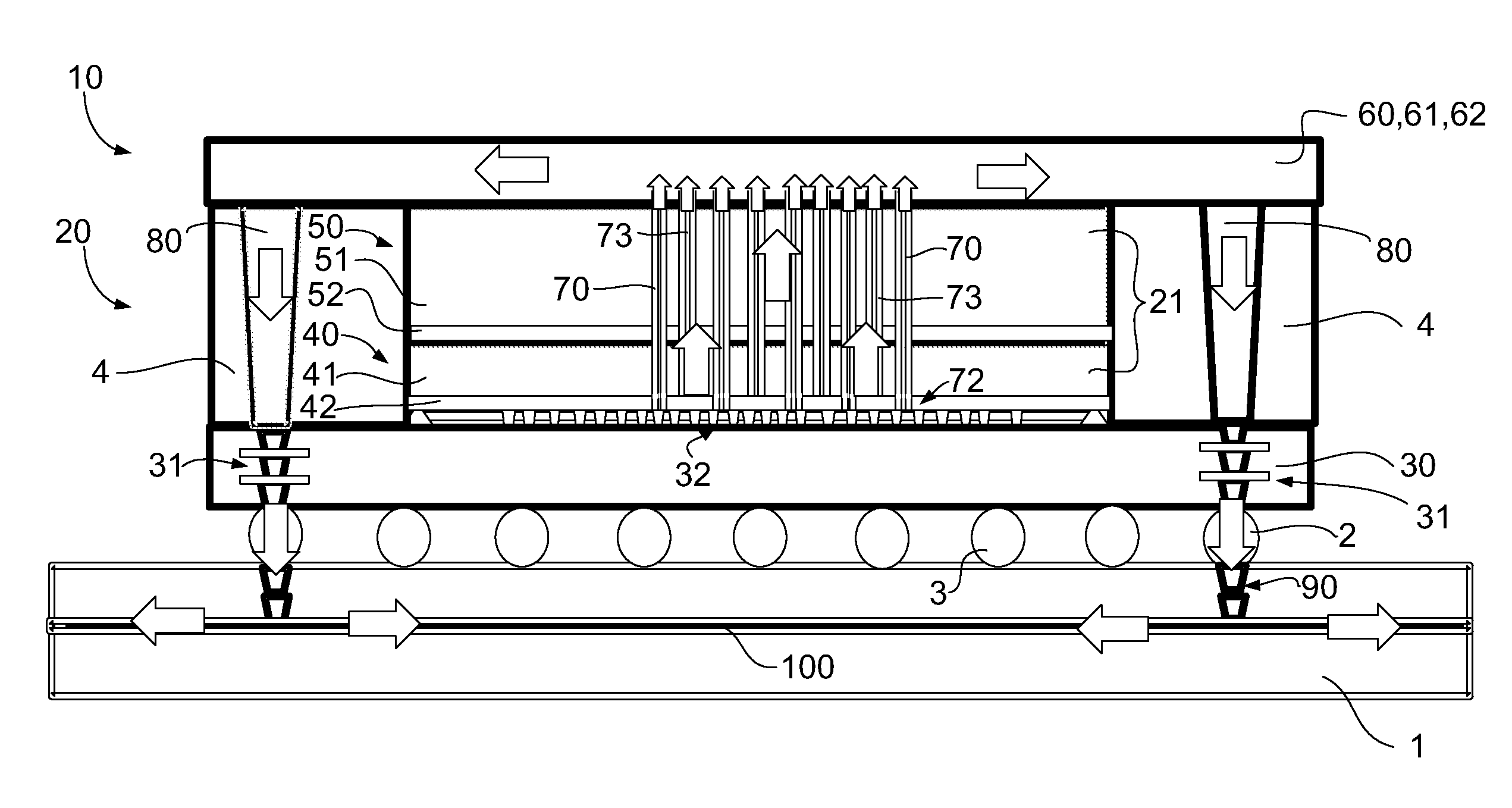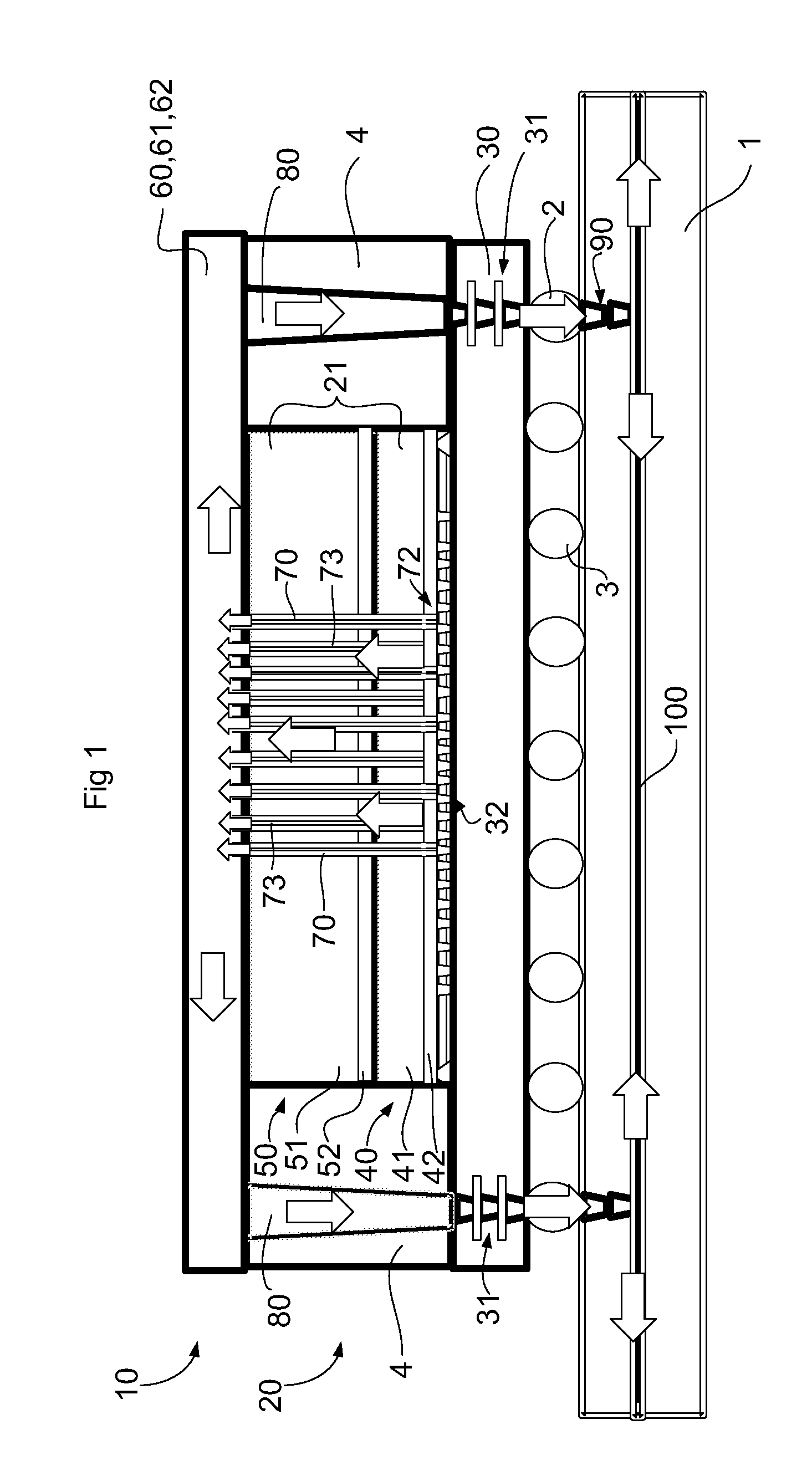Thermal package with heat slug for die stacks
a technology of heat slugs and die stacks, which is applied in the direction of electrical equipment, semiconductor devices, semiconductor/solid-state device details, etc., can solve the problems of increasing processor speeds, reducing the surface area available for dissipating heat, and reducing the size of dies in general. , to achieve the effect of improving heat dissipation and thermal connection, facilitating manufacturing, and facilitating device manufacturing
- Summary
- Abstract
- Description
- Claims
- Application Information
AI Technical Summary
Benefits of technology
Problems solved by technology
Method used
Image
Examples
first embodiment
[0034]A semiconductor assembly 10 according to the invention is shown in FIGS. 1 to 4, wherein like reference numerals designate corresponding or similar elements throughout the views, a semiconductor assembly 10 is shown in FIG. 1. A package 20 comprising a die stack 21 is included in the semiconductor assembly 10 and may have a die-die connection using a Micro Pillar Grid Array (MPGA) in the package. The die stack 21 comprising dies 40, 50, the package 20 and a printed circuit / wiring board 1 are operatively connected in a known way by solder joints 2, which connections will not be explained in detail as the skilled person is aware of this technique.
[0035]The die stack 21 includes a first die / an lower die 40, at least one further / second / upper die 50, and a package substrate 30. The dies disclosed herein are semiconductors that may have passive portions 41, 51, active portions 42, 52 or any combination or number of such portions depending on the desired function and application of t...
second embodiment
[0044]The dies 40, 50 of the semiconductor assembly 10 and the others described herein may be made based on silicon (Si) and variants thereof. In some cases for example germanium (Ge) or Ge and carbon are added to Si to increase charge carrier mobility. Alternative materials may include but not be limited to gallium arsenide (GaAs), indium phosphide (InP), graphene, or other III-IV semiconductor compounds. Further, although Through-Silicon Vias are referred to herein as TSV:s because of the prevalence of the use of silicon, in light of the fact that other materials may be used for the die, the term TSV is understood to apply to a like passage regardless of the die material In the embodiment shown in FIGS. 1-4, the upper die 50 may be, for example, a DRAM, and the lower die 40 may be a CPU die. However, various components may be used in such an arrangement, including but not limited to stacking of processor blocks. In a semiconductor assembly 10 shown in FIG. 4, a package 200 include...
PUM
 Login to View More
Login to View More Abstract
Description
Claims
Application Information
 Login to View More
Login to View More - R&D
- Intellectual Property
- Life Sciences
- Materials
- Tech Scout
- Unparalleled Data Quality
- Higher Quality Content
- 60% Fewer Hallucinations
Browse by: Latest US Patents, China's latest patents, Technical Efficacy Thesaurus, Application Domain, Technology Topic, Popular Technical Reports.
© 2025 PatSnap. All rights reserved.Legal|Privacy policy|Modern Slavery Act Transparency Statement|Sitemap|About US| Contact US: help@patsnap.com



